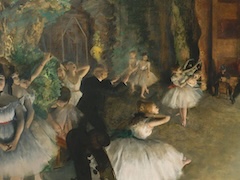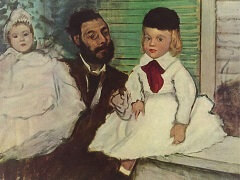Woman Drying Herself, 1903 by Edgar Degas

Many variations on this theme were attempted by Degas, none stronger, bolder, or more violent in color than this late example. The picture exists in a brilliant, Expressionist glow which reaches its climax in the red hair of the bather, against a brilliant fiery orange patch in the background. No longer do we distinguish wall or drapery. Space is flattened into a pattern of vivid hues, scratched and crossed by other colors laid over them. In places the pastel is several coats thick, Degas allowing glints of the under color to show through. There is no attempt to study actual reflections; rather he weaves an unreal pattern of color as a background for his figure.
The action of the woman is now strongly simplified and only those elements are kept which convey the dominant movement of the body. Charcoal is boldly used for outlines, and many colors, put on in excited strokes of rose, pale green, and lavender, give the figure a strange prismatic force. In such works Degas seems to belong more and more to the twentieth century. Though still based on a study from nature, such a pastel is strongly abstract in feeling, foretelling by some ten years the experiments of Wassily Kandinsky and the Expressionists such as Paul Klee who will finally do away with all references to the object, liberating light and color and line, and allowing them to become the new basis of painting.
















